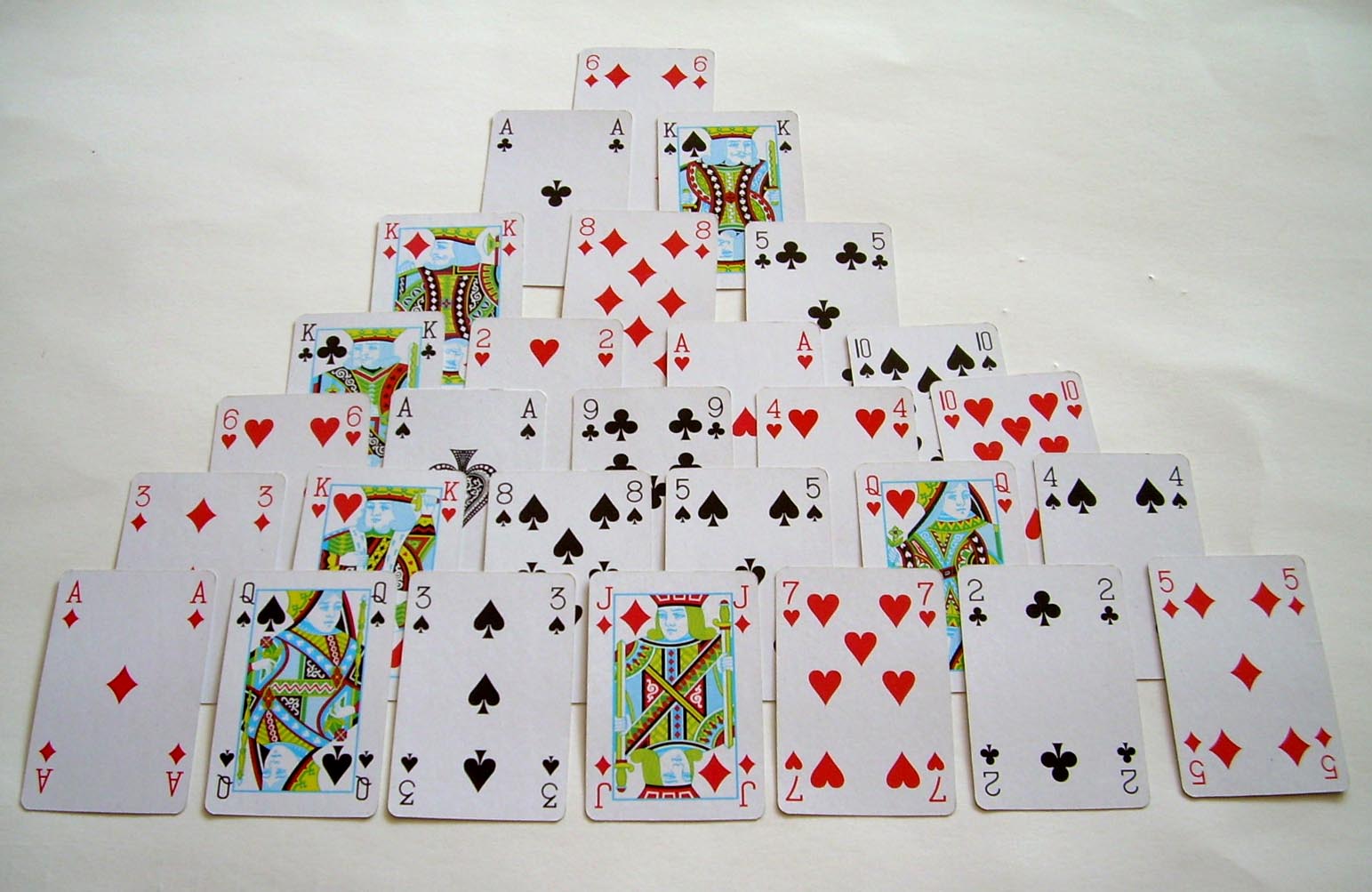
Overview
This is not a game I invented, but it's so much fun and so useful for reinforcing math facts that I've included it anyway. Like all solitaires, "Pyramid" is a very meditative game. Younger players may find the full version a bit too challenging; for these, you might implement some of the strategies listed in "Adjusting the Difficulty" below.
Difficulty: 1st grade and up.
Number of players: 1.
Duration: about 10 minutes.
Game Materials
-
A deck of playing cards.
Set-Up
Lay out seven rows of cards, with the first row containing one card and each subsequent row having one more than the one above it; in other words, the second row has two cards, the third three, and so on. In each case, the lower row should half-way cover the preceding one. (Together, the seven rows are called the tableau.) When finished, the tableau should look something like this:
The remaining cards make up the stock. The player should keep these (face-down) in front of him.
Rules
The object of "Pyramid" solitaire is to get rid of every card in the tableau. This is done by moving them to a pile called the foundation. (Your child doesn't need to know all of this terminology; just explain the rules once and show him or her how to play, and they'll be good to go.) Cards can be moved from the tableau to the foundation if: 1) they are "uncovered" (that is, no other card is laying on them), and 2) their value adds up to 13. Also, only 1 or 2 cards at a time can add up to 13; for example, it is possible to move a 7 and a 6, but not "7 + 3 + 3" or "8 + 3 + 2 + 1." Aces count as 1, and face cards as follows: Jack = 11, Queen = 12, and King = 13. In the example pictured above, two pairs can be moved to the foundation: Queen + Ace, Jack + 2. (Once uncovered, the king in the next row above could be moved to the foundation on its own.)
After moving all available pairs, the player has recourse to the stock, turning over the top card. Staying with the example above, let's say that this is an ace. Since there are no more uncovered queens on the board, this can't be played; you would turn over another card and place it on top of the ace. If this is an eight, you can move this card and the five from the tableau to the foundation. This once again exposes the ace, but it still can't be played, so you would turn over the next card. (Only the topmost card from the stock can be played.)
The game ends when either 1) all of the cards have been removed from the tableau, or 2) there are no more face-down cards in the stock to play.
Adjusting the Difficulty
First, I would recommend playing "Pyramid" with 2-3 jokers. Otherwise, the game can be a little frustrating for younger players.
You can also take out the face-cards and make the goal number 10 rather than 13. In that case, you will also want to lay out only 6 rows rather than 7.
It's easy to adjust "Pyramid" to review a particular concept. For example, if you want to review the "making nine" facts, you would play only with the one (ace) through nine cards.
Other Adjustments
You can also turn over three cards at a time from the stock. Then, once you've gone all the way through the stock, you can flip the pile over and go through it again. In this scenario, the game ends when you've gone all the way through the stock without being able to play any cards from it.
If you like solitaire games, you might have a look at Wikipedia's list of different solitaires to see if there are others you would enjoy.
